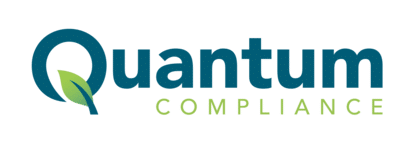July Issue No. 4 – SDS Management
Quantum’s In-House Chemist, Jessica Vachon, provides answers to industry wide pain points for SDS Management
For the full effect of GHS to be realized, proper management of SDSs is required. On the GHS compliant SDS, hazardous chemicals are classified under new rules. The format has also been updated to 16 sections, which in some cases, nearly doubles the number of pages from the original MSDS. With the sudden influx of new SDSs, companies must have an efficient strategy to manage the hundreds, perhaps thousands, of pages.
To better paint the picture of the challenges of managing (M)SDSs, I interviewed my colleague, Jessica, who as a chemist, has extensive experience working in chemical manufacturing plants.
CL: “Jessica, thanks for taking the time to speak with me today. I understand prior to coming to Quantum, you worked at a couple chemical-manufacturing plants. Could you tell me a bit about the challenges you faced working with hazardous chemicals?”
JV: “My pleasure, Chris. One of the biggest challenges in working with hazardous chemicals was properly communicating safe usage. When I was working in the plants, MSDSs were still being used. I recall one of the companies I was at, kept a filing cabinet with printed MSDSs. I found this system extremely inefficient.”
CL: “How so?”
JV: “MSDSs communicate chemical hazards. These files need to be easily accessible, especially in case of accidents, spills, or unforeseen circumstances.”
CL: “So I take it that organizing the MSDSs in a filing cabinet didn’t make them very accessible?”
JV: “I’ll let you be the judge. Each time I needed an MSDS, several steps had to be taken. I’d have to put down what I was working on at the time and put on Personal Protective Equipment (PPE). Then I’d have to trek across the plant, facing many potentially hazardous situations, to get to the office where the MSDS filing cabinet was located. Locating the exact sheet I needed was never an easy task. With so many MSDSs, it was difficult to track and maintain organization. Once I did find the MSDS, I’d have to make a copy of it, as we had to keep the original in the filing cabinet. Finally, with the copied MSDS in hand, I’d once again make the journey back to my lab across the plant.
never an easy task. With so many MSDSs, it was difficult to track and maintain organization. Once I did find the MSDS, I’d have to make a copy of it, as we had to keep the original in the filing cabinet. Finally, with the copied MSDS in hand, I’d once again make the journey back to my lab across the plant.
CL: “A lot of time must have been invested just to obtain the MSDS you needed.”
JV: “Yes! A lot of time! From the company’s stand point, the time I spent obtaining the MSDS could have been better spent on formulating new products. Not only was there a cost to the time spent getting the MSDS, imagine if something happened on my trek to the MSDS filing cabinet. This would add additional cost to the company in the form of regulatory fines and worker’s compensation. Luckily I was never injured on one of these journeys.”
CL: “From your experience, what would you do to improve the situation?”
JV: “Another company that I was at before joining Quantum, had all their MSDSs loaded into a computer system. This system was seamlessly integrated between multiple locations and accessible by many users. I recall an instance where we had a chemical spill in the lab. I immediately accessed the system and within seconds knew the best course of action to respond to the chemical spill. This would not have been possible using a paper-based MSDS management system.”
CL: “Talk about a well oiled machine! It’s amazing what kind of experiences you’ve been through. Quantum’s extremely lucky to have you on the team. Do you have any additional advice for us today?”
JV: “HazCom has come a long way and will continue to improve with the alignment to GHS. Now that we are past the conversion deadline, companies need to make sure they are on top of managing their new SDSs. Paper-based systems and spreadsheets are not the most efficient or effective. Our very own cloud-based SDS management software may be the perfect solution for companies looking to save on cost!”
Global companies and SDS Management
If you’re an international company, the change from MSDS to SDS may have been incredibly helpful for you in terms of maintaining consistent standards across borders. Once you have a format that you can use and accept in all of your locations, your business has one less thing to worry about.
But however much it may have already helped, the conversion itself is not the only SDS step you’ll need to take in order to standardize your practices from country to country. A safety data sheet is only useful if you can access it! Without proper safety data sheet management services, your conversion process cannot fully be complete.
Having a centralized SDS management system means that anyone within your company can access your own database, so long as they have proper authorization. You can store SDSs in different languages to account for international customers, meaning that you’ll be able to get things to the consumer almost instantly instead of having to go through an extended translation process on a per-SDS basis.
Some companies prefer to keep their SDSs strictly in binders, using paper copies and no cohesive digital system. While this might work for an individual plant or lab, it is not a system that can work well on a large scale. If consumers ask for copies of your SDSs, you will then have to either spend time tracking down the file or photocopy/scan your existing paper copy, neither of which are beneficial uses of your time.
To make your daily operations easier in each one of your locations and for the company overall, you should use online SDS management software. An SDS management service may in fact be less expensive than individually applying changes location by location because of the time and effort it will save your staff. This will help you access the chemical safety data you need in each of your individual locations quickly and easily, and any changes that need to be made to your SDSs or GHS labels can be applied uniformly and instantly.
For more on centralized online SDS management services, visit https://usequantum.com/qsds/sds-management-software/


